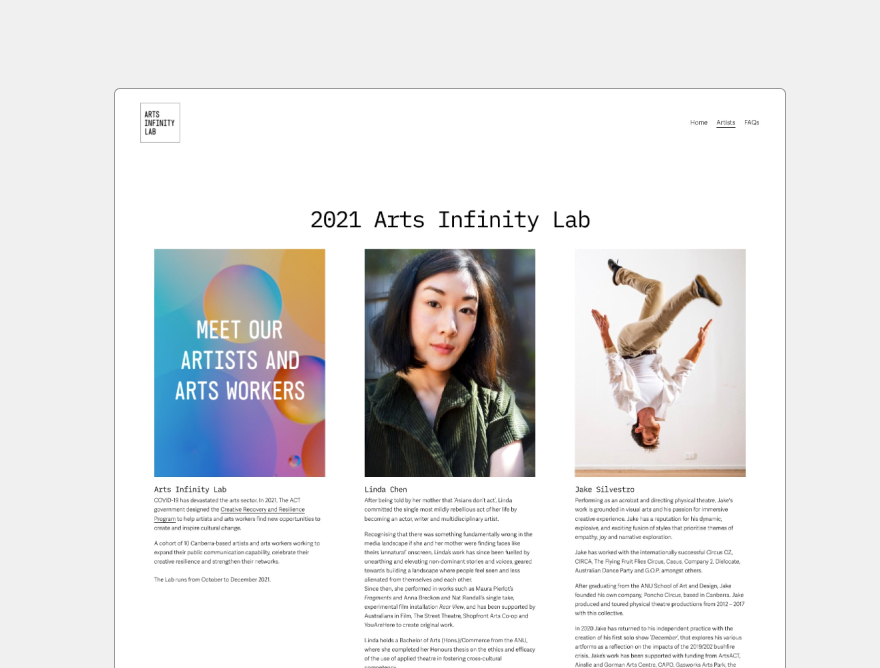Digital Transformation Agency
Digitising Australia’s most important content style guide
The Style Manual is the book outlining the Australian government’s advice and rules on writing, editing and publishing.
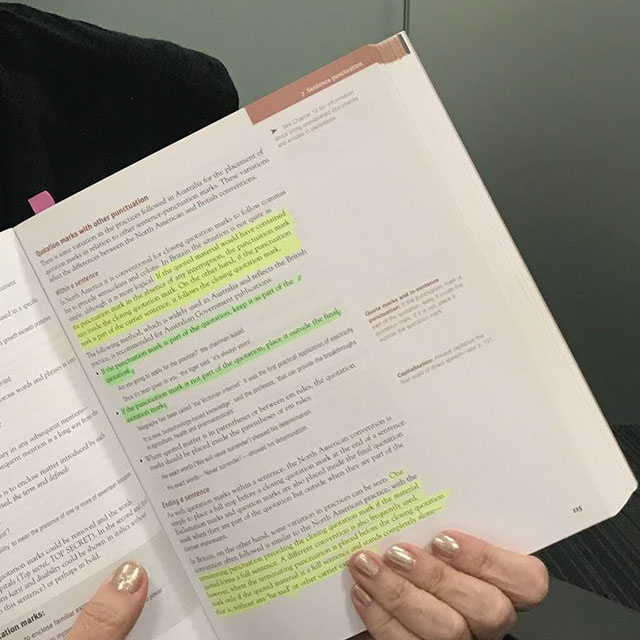
Outcomes
-
Insight into the strong expectation that Style Manual users have for a digital version
-
Information architecture and content hierarchy for the 7th edition of the Manual
-
A set of design principles to guide development and get cultural buy-in
Services
- Research and insights
- Product innovation
- Product strategy
Sectors
Digitising a sixteen-year-old communications bible
The purpose of the Style Manual is to encourage quality and consistency of written communication, from and within government. Historically, the Style Manual has fallen under the Finance portfolio but it was recently re-allocated to the DTA.
Currently in its 6th edition, it was last updated in 2002. It was clear that a new edition is needed, both to digitise it and to bring it up to date - while many of its guidelines remain unchanged, aspects of writing related to the digital space are outdated or missing altogether. Culturally appropriate and inclusive language has also come a long way since 2002.
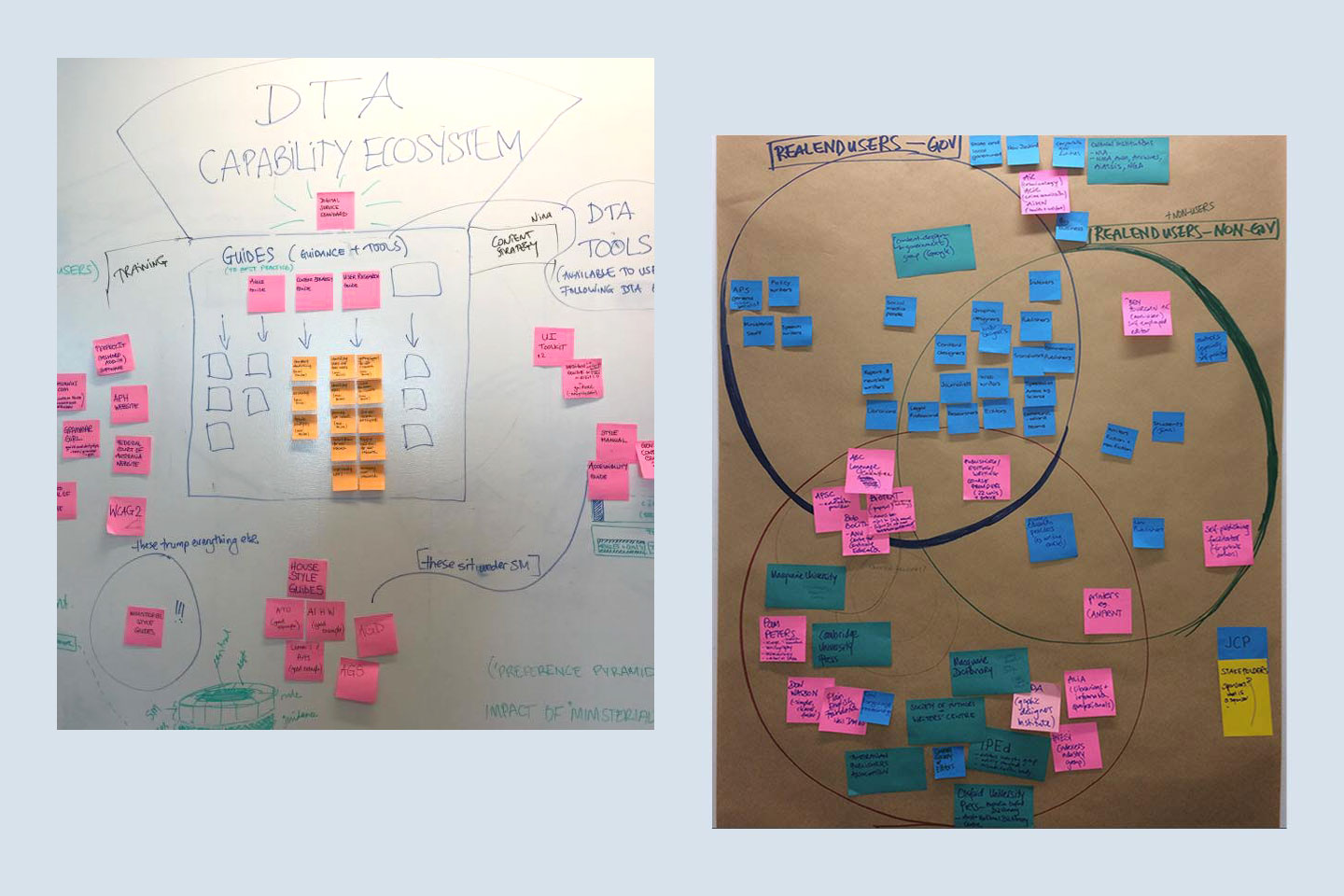
Initial research and synthesis that was undertaken to understand how the current print style manual is used.
A user base with extremely high expectations
Our 8-week discovery aimed to understand user needs for writing and editing in general, and how the Style Manual fits (or doesn’t fit) into that picture. Many of these users are editors, whose work requires them to have high attention to detail and zero tolerance for errors. For some, the Manual is not just a functional item but an object of fond attachment, *“a safety net and a companion”.
*
One participant said that, without the Style Manual, “I wouldn’t want to do this job anymore. My life wouldn’t be worth living”. Another called the Manual their “biggest ally”.
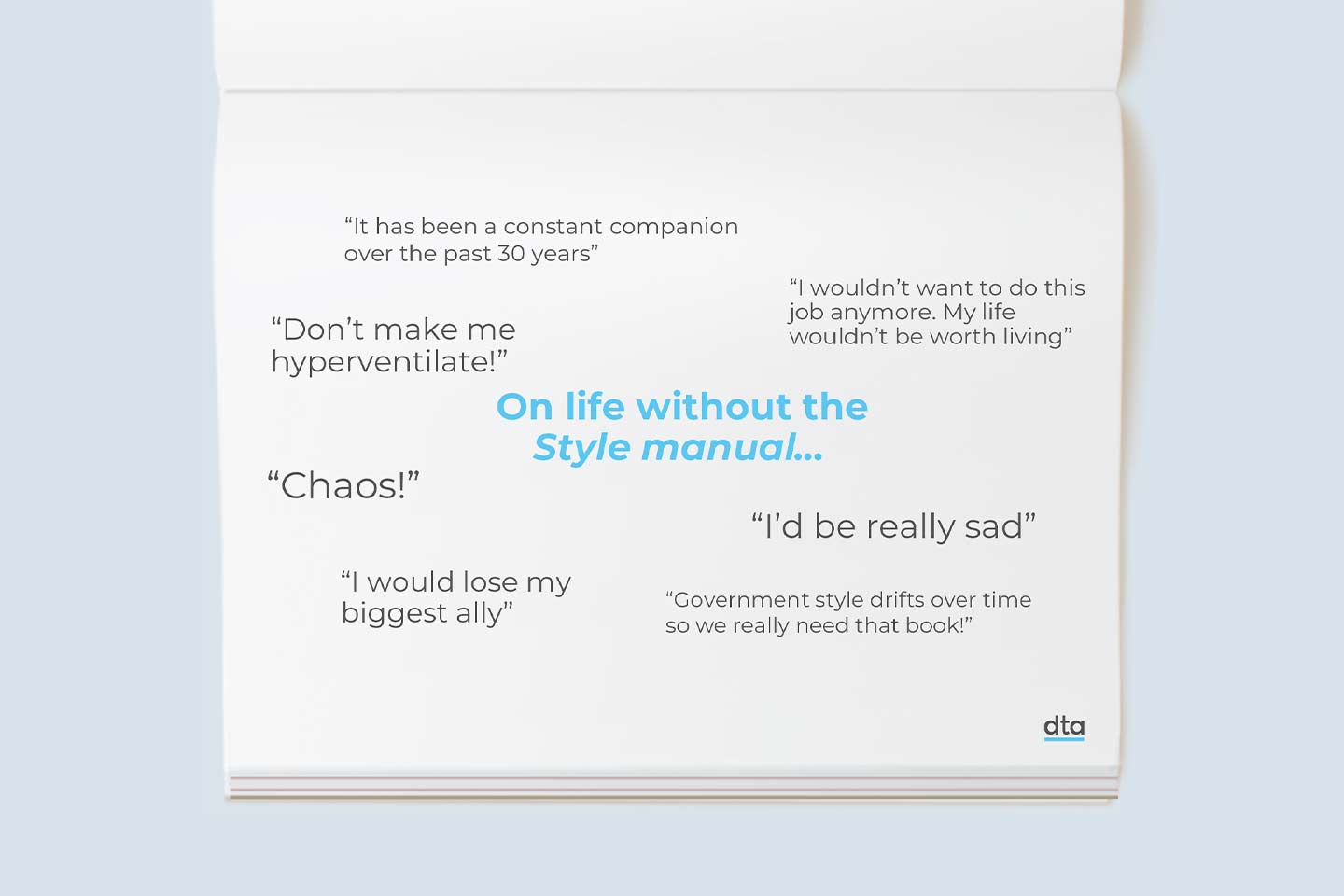
Key quotes highlighting how people would feel about life without the style manual.
Cross-department and level understanding
To understand user journeys and key tasks, we conducted research with staff in the Australian Public Service around their use of the traditional print version of the Style Manual. We studied the various use cases of staff at all levels, in over 10 departments and agencies in the ACT, Melbourne and Sydney. We identified four primary user types and built an understanding of how needs differ across these user types.
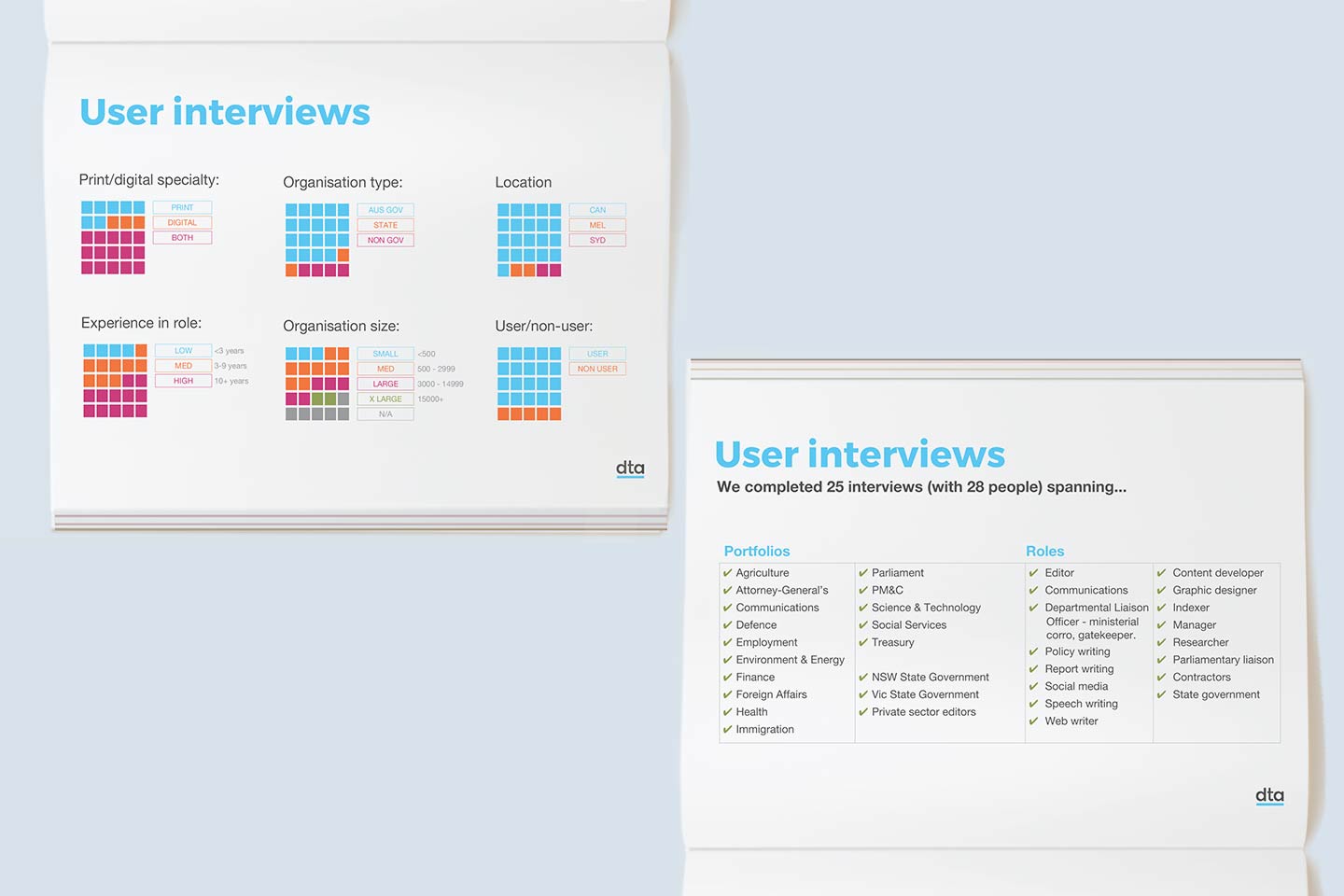
Data visualisations showing the range of different users and departments engaged as part of the project.
‘Expert-led, community-centred’
Based on our research, we developed six design principles for any future changes to the Manual. These were designed to enhance and support its authority and give users clarity, whether they were language professionals or occasional report writers. We then used this understanding to design an information architecture and content hierarchy for the digitised version of the Manual. We also provided a set of recommendations at the level of culture: the need for buy-in at the ministerial level, collaboration with APS training providers, and protection of the respected Style Manual brand.
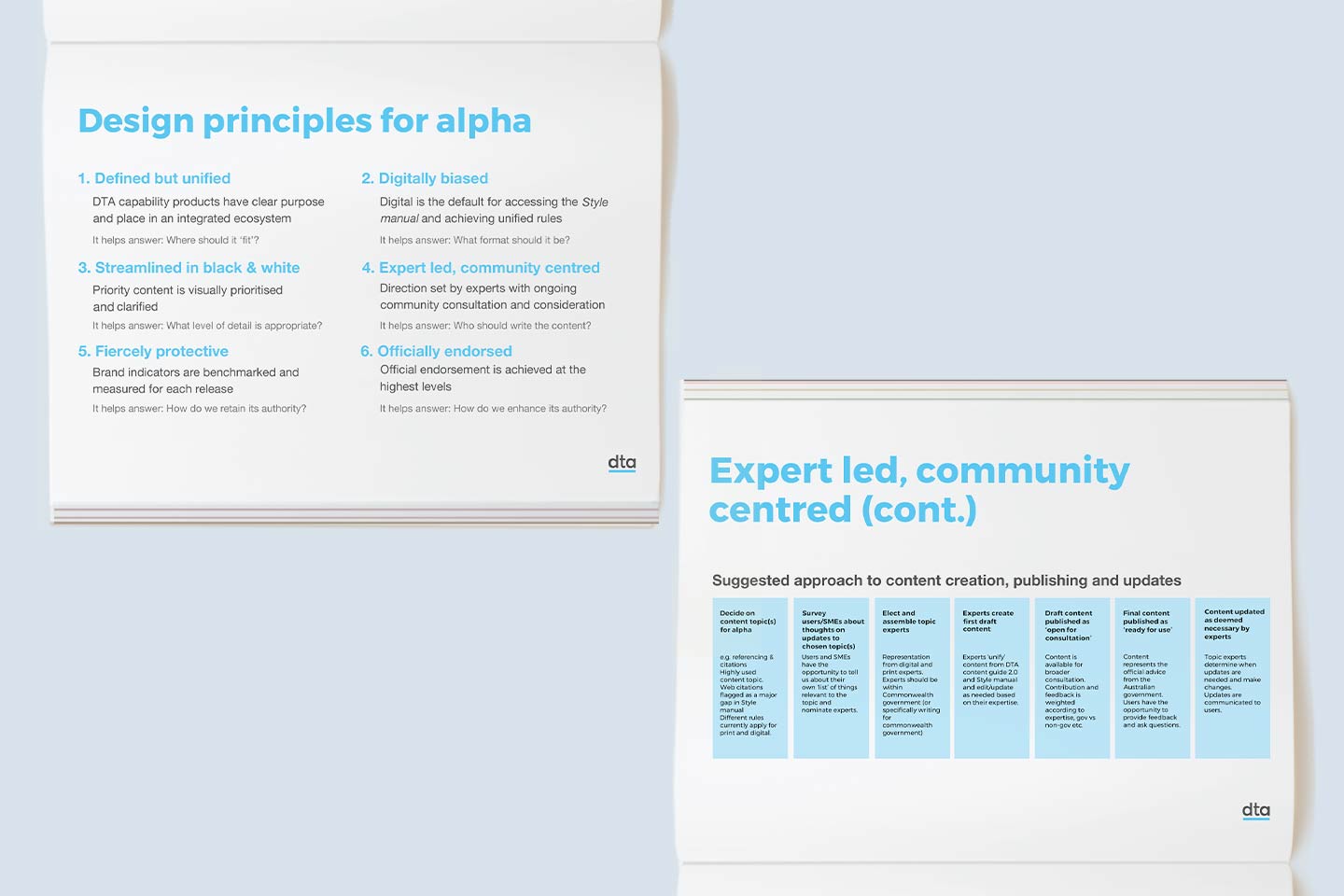
The design principles and guidance that were used to inform the digitisation of the style manual.

